78 F. high in the Twin Cities Tuesday. Had fog burned off faster we would have hit 80 F or warmer.
71 F. average high on May 20.
72 F. high on May 20, 2013.
No rain in the forecast through Saturday evening.
T-storms likely by Sunday and Memorial Day.
Pat Sajak blows a gasket over climate change. How do you spell off-the-rails? Details below.
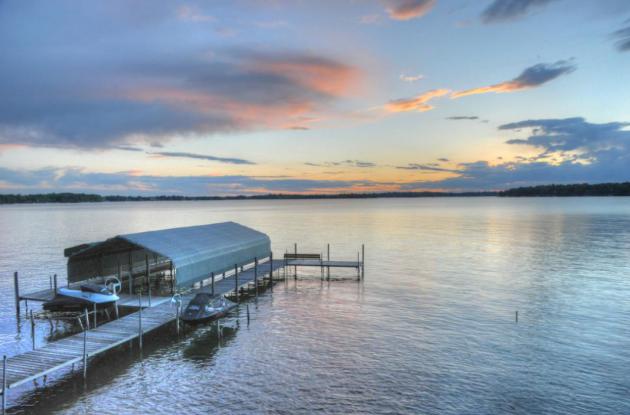
Looking Up
Imagine if the Twins, Vikings, Timberwolves and Wild lost EVERY game, and you were the poor schlub-of-a-sportscaster who has to report on what happened & why. Over time this perpetual losing streak would begin to eat away at your soul.
As meteorologists we’re trained to take an objective look at the data; take emotion out of the equation. Just issue the best forecast you can. That looks good on paper, but when the weather is foul for extended periods of time – and nearly everyone you talk to is ranting about “this crummy pattern!” – it wears on you.
A foul forecast fatigue sets in.
So I’m as happy as the next guy to see Mother Nature turning the page. May is finally popping up on the maps and 80F should feel like a revelation by the weekend.
Lingering fog and low-level crud kept us a bit cooler than predicted yesterday, but a puff of drier, slightly cooler Canadian air treats us to sunshine the rest of the week. No frost this time around.
A return southerly flow of humid air sparks T-storms Sunday and Memorial Day. If the sun peeks out for even an hour or two (likely) we’ll see highs at or just above 80F. In fact we may see 80s much of next week with sporadic outbreaks of T-storms, some capable of minor flash flooding as a warm front stalls nearby.
In the blog below: lousy weather is good for job productivity and globally, April tied 2010 for the warmest on record.

Gradual Warming Trend. Memorial Day weekend doesn’t look quite as warm as it did yesterday, but I still see upper 70s to near 80F from Saturday into Memorial Day. T-storms may keep us a bit cooler, especially Sunday, which appears to be the wettest day right now with the most widespread T-storm outbreak. ECMWF data suggests a streak of 80s next week. You remember 80s, right?
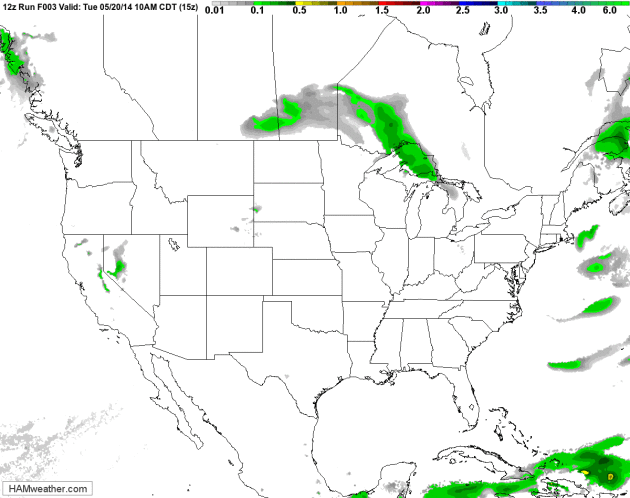
84 Hour Future Radar. HAMweather visualization of NOAA’s NAM data shows showers and T-storms, some severe, popping up across the Ohio Valley today, pushing into the Mid Atlantic. A plume of moisture pushing out of the Gulf of Mexico may drop significant rains on drought-plagued regions of Texas and Oklahoma; T-storms reaching the Upper Midwest again by late Saturday and Sunday.
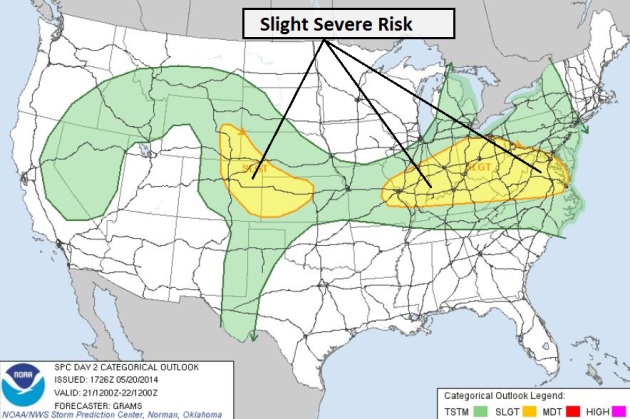
Slight Risk. NOAA SPC shows a slight threat of severe storms today from Denver east to St. Louis, Louisville, Columbus and Washington D.C. – storms firing along an active frontal boundary by mid and late afternoon.
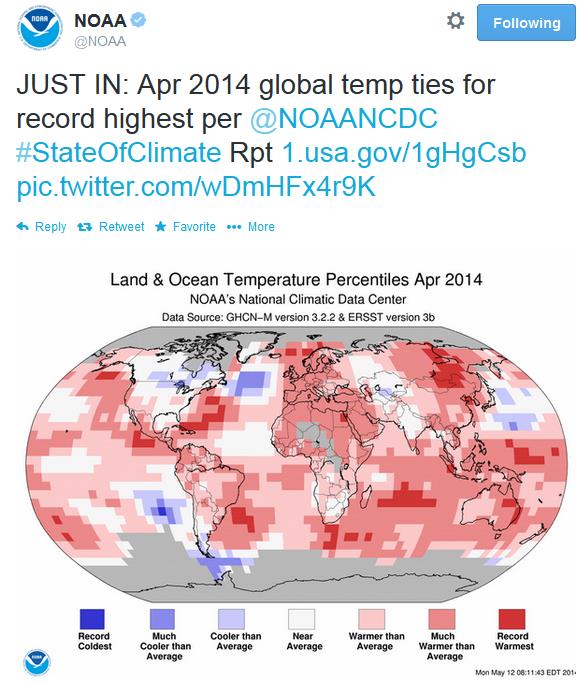
April 2014 Ties 2010 For Warmest On Record, Worldwide. And the first 4 months of 2014 were the 6th warmest on record. A strong El Nino forecast for the latter half of 2014 may cause global temperatures to spike even more. Here are more details from NOAA NCDC:
- The combined average temperature over global land and ocean surfaces for April 2014 tied with 2010 as the highest on record for the month, at 0.77°C (1.39°F) above the 20th century average of 13.7°C (56.7°F).
- The global land surface temperature was 1.35°C (2.43°F) above the 20th century average of 8.1°C (46.5°F), marking the third warmest April on record. For the ocean, the April global sea surface temperature was 0.55°C (0.99°F) above the 20th century average of 16.0°C (60.9°F), also the third highest for April on record.
- The combined global land and ocean average surface temperature for the January–April period (year-to-date) was 0.64°C (1.15°F) above the 20th century average of 12.6°C (54.8°F), the sixth warmest such period on record.
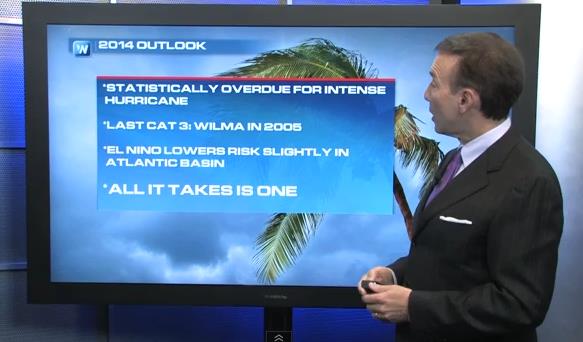
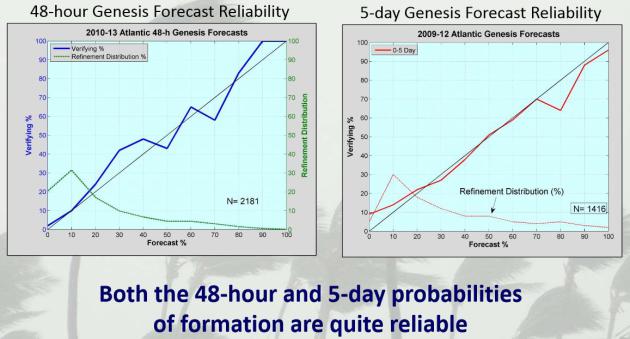
New Hurricane Tools and Capabilities in 2014. NHC will be issuing operational storm surge forecasts if and when a tropical system approaches the coast, but I found a few other interesting nuggets here.

Sample NOAA NHC Storm Surge Forecast. No, residents of Tampa don’t need to be concerned, at least not yet. Keep in mind most of the structural damage from hurricanes doesn’t come from high winds, but from the “storm surge”, a rapid rise in water levels triggered by sustained winds and low pressure, pushing water well inland. This year NHC will begin issuing surge predictions based on a storm’s track, intensity, natural tides and bathymetric data (slope of terrain just offshore).

How Might El Nino Affect Hurricane Season? In clip #2 of Climate Matters: statistically El Nino summers and falls tend to increase wind shear over the tropics, resulting in fewer tropical storms and hurricanes. But that’s no reason for complacency – we’ve had a nearly 9 year lull in hurricane activity in the Atlantic and Caribbean, but at some point America’s luck will run out. Will 2014 be the year? “The last major hurricane to hit the United States was Wilma in 2005. Since then the tropics have been *relatively* quiet, and that is leading some meteorologists to worry. WeatherNationTV Chief Meteorologist Paul Douglas goes over just why we shouldn’t let our guard down.”
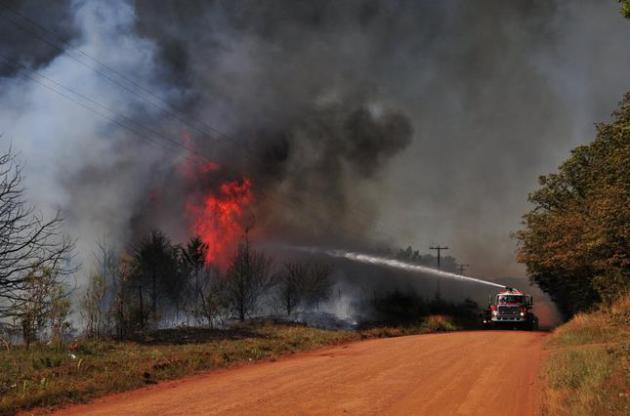
Massive Wildfires Cause For Concern In Oklahoma. Here’s an excerpt from The Daily Ardmoreite in Ardmore, Oklahoma: “Wildfires in Oklahoma so far this month have burned more than 60 times the average acreage, according to data from the Oklahoma Forestry Services. Since 2005, the state has averaged 454 acres burned from May wildfires. So far this month, more than 30,000 acres have burned, The Oklahoman reported Sunday. Guthrie Fire Chief Eric Harlow says that if things don’t change, fire crews will be in for a long summer. “We shouldn’t have this fire behavior the first week of May,” he said….”
File Photo credit above: “Firefighters work to extinguish a flare up on Monday, May 5, 2014, in Guthrie, Okla. Gov. Mary Fallin has declared a state emergency across Oklahoma after several wildfires broke out across the state, including a blaze north of Oklahoma City that destroyed at least a half dozen homes and left one man dead.” (AP Photo/Nick Oxford).

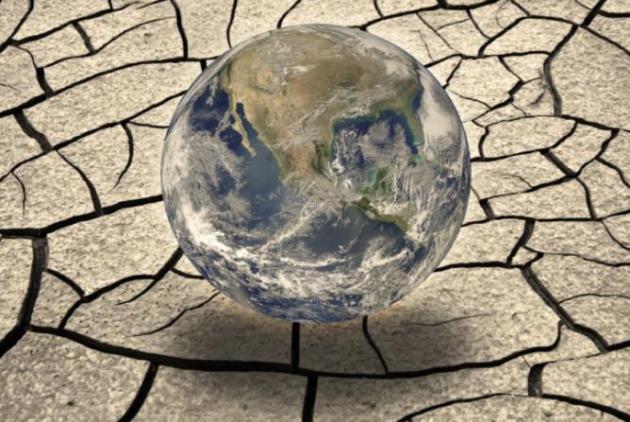
Monitoring The State of Global Rainfall and Drought. redOrbit has an interesting story about pushing the science to be able to accurately predict drought, months in advance. Here’s an excerpt: “…A team of researchers from UC Santa Barbara and the United States Geological Survey (USGS) has developed a new dataset that can be used for environmental and drought earl warning. The dataset is called CHIRPS, or Climate Hazards Group Infrared Precipitation with Stations, and it is the result of a collaboration between UCSB’s Climate Hazards Group and USGS’s Earth Resources Observations and Science (EROS). CHIRPS combines space observed rainfall data with more than three decades of ground station data collected worldwide…”
Image Credit: Thinkstock.com
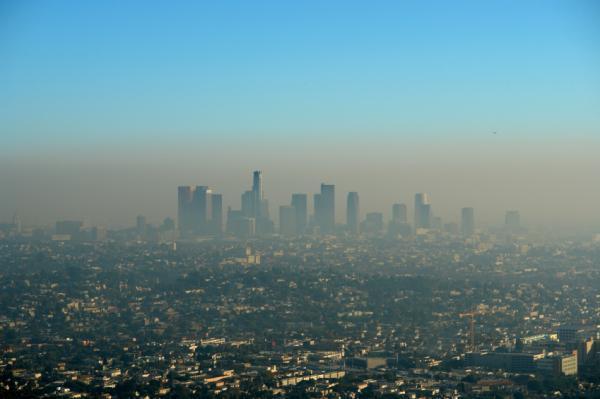
Can Poor Air Quality Lead To Pregnancy and Birth Complications? Here’s an excerpt of a (sponsored) story at The Salt Lake Tribune: “…The U.S. Environmental Protection Agency offers similar advice and has also researched the health effects of bad air on pregnant women and newborns. In a report titled “Promoting Good Prenatal Health: Air Pollution and Pregnancy,” the EPA warns that prenatal exposure to pollutants increases risk of preterm delivery and low birth weight — factors that can compound to other problems for babies, including developmental disabilities later on…”
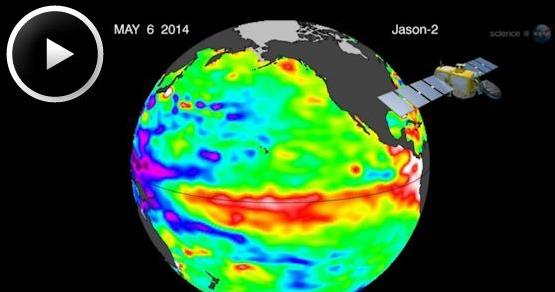
El Nino: Is 2014 The New 1997? NASA Science has an update on what may turn into a significant warming of equatorial Pacific Ocean water; here’s a video and story excerpt: “Every ten days, the NASA/French Space Agency Jason-2 satellite maps all the world’s oceans, monitoring changes in sea surface height, a measure of heat in the upper layers of the water. Because our planet is more than 70% ocean, this information is crucial to global forecasts of weather and climate. Lately, Jason-2 has seen something brewing in the Pacific—and it looks a lot like 1997. “A pattern of sea surface heights and temperatures has formed that reminds me of the way the Pacific looked in the spring of 1997,” says Bill Patzert, a climatologist at NASA’s Jet Propulsion Laboratory. “That turned out to be the precursor of a big El Niño...”
Read more at http://www.redorbit.com/news/science/1113148141/drought-and-rain-monitoring-chirps-051614/#fAijzheZX6rIZfy5.99Can Poor Air Quality Lead To Pregnancy and Birth Complications? Here’s an excerpt of a (sponsored) story at The Salt Lake Tribune: “…The U.S. Environmental Protection Agency offers similar advice and has also researched the health effects of bad air on pregnant women and newborns. In a report titled “Promoting Good Prenatal Health: Air Pollution and Pregnancy,” the EPA warns that prenatal exposure to pollutants increases risk of preterm delivery and low birth weight — factors that can compound to other problems for babies, including developmental disabilities later on…”

Strongest El Nino in 17 Years Brewing: Oregon Weather Watch. OregonLive.com has more data from NASA on a pending El Nino event, which may be the most significant since 1997-98. Here’s an excerpt: “NASA satellites and ocean sensors are showing that sea surface temperatures in the equatorial Pacific Ocean this May look similar to the conditions in May 1997 that resulted in one of the strongest El Niño events of the last century during the fall and winter of 1997-98...”
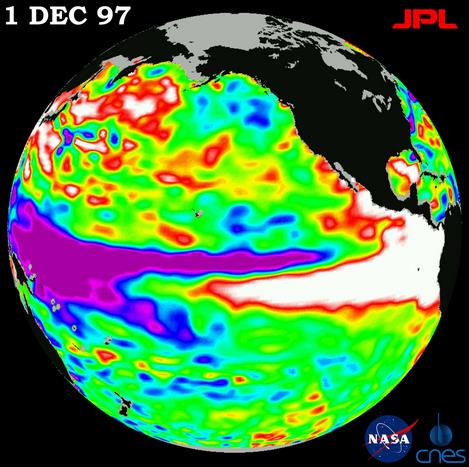
How El Nino Might Alter The Political Climate. Here’s a snippet from The Upshot at The New York Times: “…But El Niño has the potential to do more than offer a one-time jolt to climate activists. It could unleash a new wave of warming that could shape the debate for a decade, or longer. In this chain of events, a strong El Niño causes a shift in a longer cycle known as the Pacific Decadal Oscillation, which favors more frequent and intense El Niños during its “warm” or “positive” phase. The oscillation has been “negative” or “cool” since the historic El Niño of 1998…”

This Is What’s Actually Making Your Horribly Unproductive. Confirming our suspicions that spring fever can distract us from the task at hand; here’s a clip from a story at TIME.com: “…If you think gloomy weather saps your motivation, you’re not alone; more than 80% of people surveyed by researchers thought so. But the authors of this new study found out the opposite is actually true: Good weather makes us want to go do fun things, and thinking about what we’d rather be doing distracts us from what we should be doing. Career and workplace experts have some suggestions for how to keep “spring fever” from infecting your job performance on nice days…”

UW-Madison Captures Video of “Fire Rainbow”. I found this interesting – “fire rainbows” are only visible close to the summer solstice. Here’s an explanation and video clip from WXOW.com in La Crosse: “…This week UW-Madison shared a video and photo of what experts are calling a rare rainbow imposter showing up in the sky on Thursday. UW meteorologists say a ‘fire rainbow’ is an atmospheric phenomenon known as a circumhorizontal arc, often mistaken for a rainbow because of its colors. “They’re not all that common but they’re not completely rare, either,” says Steve Ackerman, director of the UW-Madison Cooperative Institute for Meteorological Satellite Studies. “I’ve only seen a half-dozen in my lifetime here in Madison…”

The Worst Day Of My Life Is Now New York’s Hottest Tourist Attraction. The author of this story at Buzzfeed lost his sister in the 9/11 terrorist attack of The World Trade Towers. Here is an excerpt of the article he wrote after entering the 9/11 Memorial Museum for the first time: “… I am allowed to enter the 9/11 Museum a few days before this week’s grand opening for the general public, but why would I want that? Why would I accept an invitation to a roughly $350 million, 110,000-square-foot refutation of everything we tried to practice, a gleaming monument to What Happened, not What Happened to Us? Something snapped while reading about the gift shop — I didn’t want to duck and hide, I wanted to run straight into the absurdity and horror and feel every bit of the righteous indignation and come out the other side raw…”

How Far Your Paycheck Goes in 356 U.S. Cities. Planet Money at NPR has an interesting story about just how far your paycheck really goes – the amount you make vs. cost of living factors. Here’s an excerpt: “…So what you really want to know is this: How much do workers make in different cities? And how far does that money go in each city? The that lets us dive into these questions. In the graph below, the left-hand side shows the annual income for typical, full-time workers in different metro areas. The right-hand side adjusts that figure for the cost of living in each metro area...”

New “Dual Carbon” Battery Charges 20 Times Faster Than Li-ion. Will new innovations and technological breakthroughs continue to make renewable power cheaper and accelerate adoption? Right now I wouldn’t bet against the trends, as Moore’s Law applies to solar, wind and other (clean) forms of energy. An even bigger question is whether most of these breakthroughs will originate in the USA or elsewhere? Here’s a clip from an article at Gizmag: “Japanese company Power Japan Plus has announced the development and planned mass-production of “Ryden,” a disruptive carbon battery that can be charged 20 times faster than an ordinary lithium-ion cell. The battery, which is cheap to manufacture, safe, and environmentally friendly, could be ideal to improve the range and charging times of electric cars…”

This Will Make You Never, Ever Want To Get In A Hot Tub Again. Just wake me up when it’s safe to come out of my bunker. Huffington Post has a story that was not sponsored by America’s hot tub manufacturers. Here’s an excerpt: “…While hot tub rash typically clears up on its own without treatment, another more serious condition to be aware of is the potentially fatal Legionnaires’ disease, a type of pneumonia caused by a germ called Legionella, which is found in water (especially warm water) and can be breathed in from the steam or mist surrounding a contaminated hot tub — people older than age 50, smokers and those with weakened immune systems are particularly susceptible…”

Netflix’s Vision For 2025: 48 Million Channels. And still nothing worthwhile to watch? We’ll see. Wired.com has the story and interview; here’s an excerpt: “…According to Hunt, this will change with internet TV. He said Netflix is now working to perfect its personalization technology to the point where users will no longer have to choose what they want to watch from a grid of shows and movies. Instead, the recommendation engine will be so finely tuned that it will show users “one or two suggestions that perfectly fit what they want to watch now.” “I think this vision is possible,” Hunt said. “We’ve come a long way towards it, and we have a ways to go still.”

Sorry, But There’s No Such Thing As A “Healthy” Sugar. But wait, I read just the opposite on the Internet. Sugar is GOOD for me, in large doses, preferably in processed food and Halloween candy. This article at Huffington Post will most certainly add to the confusion; here’s the introduction: “We hate to be the bearers of bad news, but we feel the need to clarify a common misconception: There’s no such thing as a “healthy” sugar. Or even a “less bad” sugar. Your body doesn’t care if it’s “organic” or “unrefined” or “all-natural,” and it certainly doesn’t care if Gwyneth Paltrow deems it suitable for her children’s consumption. Done hyperventilating? Now let’s delve into the nutritional science behind this…”

TODAY: Partly sunny, fresh breeze. Winds: NW 15. High: 66
WEDNESDAY NIGHT: Clearing and cool. Low: 48
THURSDAY: Blue sky, less wind. High: 69
FRIDAY: Plenty of sun. Leave work early. Wake-up: 51. High: 75
SATURDAY: Some sun, best day for the lake? Wake-up: 54. High: 79
SUNDAY: Few heavy T-storms likely. Sticky. Wake-up: 60. High: 77
MEMORIAL DAY: Peeks of sun, still very humid. More PM T-storms. Wake-up: 62. High: 81
TUESDAY: More storms. Flash flood risk? Wake-up: 63. High: 79
Climate Stories…

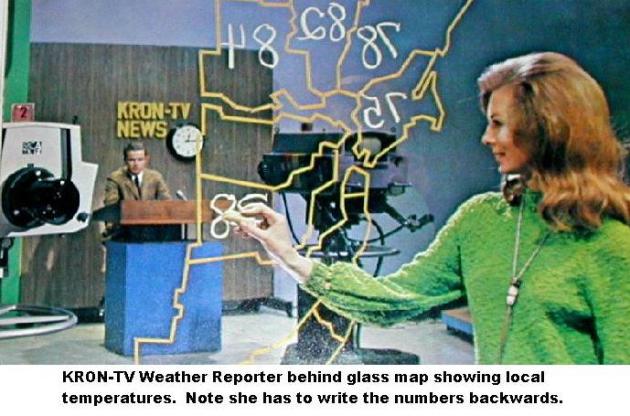
Weathercasters Grapple With Climate Change. No kidding. You have 3 minutes to discuss the (increasingly toxic) weather, and, oh, by the way, can you squeeze a little climate science in? Mission impossible, at least the way a typical local TV newscast is structured today. Here’s an excerpt from a story at TVNewsCheck: “…But whether the administration reached out to the right people to cover the highly charged issue depends on whom you ask. Even the weathercasters who went to the White House are not sure covering climate change should be part of their jobs. “I wish climatologists were doing this and not me. They know their stuff,” says Bill Martin, chief meteorologist at KTVU, the Cox-owned Fox affiliate in San Francisco (DMA 6). “I am not super comfortable talking about climate change. I am super comfortable talking weather,” says Martin, who was caught so off-guard by the administration’s invite that he didn’t even bother returning the initial calls, figuring they were pranks...”
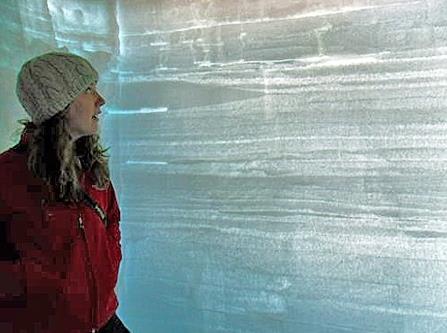
Climate Change, Forest Fires Drove Widespread Surface Melting of Greenland Ice Sheet. Other factors come into play, beyond warming temperatures, according to this post at phys.org; here’s a clip: “Rising temperatures and ash from Northen Hemisphere forest fires combined to cause large-scale surface melting of the Greenland ice sheet in 1889 and 2012, contradicting conventional thinking that the melt events were driven by warming along, a Dartmouth College-led study finds. The findings suggest that continued climate change will result in nearly annual widespread melting of the ice sheet’s surface by the year 2100, and that a positive feedback mechanism may be set in motion…”
Photo credit above: “This image shows Kaitlin Keegan, the study’s lead author and a Dartmouth doctoral student, examining the melt layers of the Greenland ice sheet at the summit.” Credit: Kaitlin Keegan.
Read more at: http://phys.org/news/2014-05-climate-forest-drove-widespread-surface.html#jCp
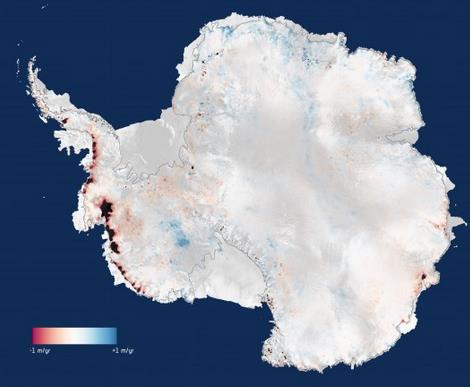
ESA’s CryoSat Data: Antarctica’s Ice Sheet Shrinking Faster Than Ever. Here’s an excerpt from a good explainer at gizmag.com: “…The UK-based Centre for Polar Observation and Modelling analyzed data collected over three years (by nearly continuous surveillance) from CryoSat, to create the world’s first comprehensive assessment of elevation change in the Antarctic ice sheets. Results of the analysis found that ice loss in the polar region was 31 percent greater than that of the previous period of observation (from 2005-2011), with substantial thinning of the ice in the Amundsen Sea area of West Antarctica…”
Graphic credit above: “Recent observations of Antarctica suggest as much as 159 billion tonnes of ice is lost each year.” (Image: CPOM/Leeds/ESA).
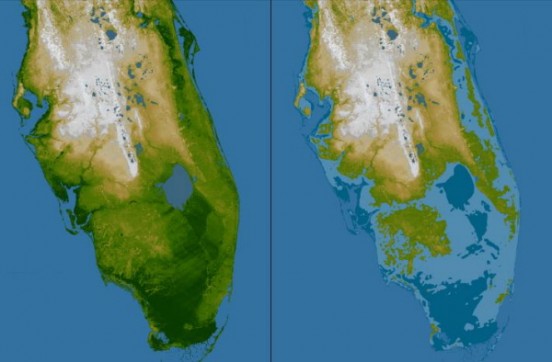
Evangelicals in Florida Turn To Climate Change And Call on Gov. Scott To Act. Full disclosure: I’m on the board of EEN, the Evangelical Environmental Network. It’s President, Rev. Mitch Hescox, was recently quoted in the Tampa Bay Times; here’s an excerpt of what he had to say: “...Among the panelists is the Rev. Mich Hescox, president of the Evangelical Environmental Network, who wrote a letter to Rubio about his widely publicized comments doubting man’s contribution to climate change. Hescox is also gathering signatures for a petition aimed at Scott. “As Christians, we believe that God’s grace empowers us to honestly confront the challenges we face and change for the better,” it reads. “We are failing to keep our air and water clean for our children, contributing to a changing climate that most hurts the world’s poor, and putting Floridians at risk as temperatures and sea levels continue to rise. To meet these challenges, we need leaders who understand our duty to God’s creation and future generations…”

National Landmarks Threatened By Climate Change. USA TODAY has the article; here’s an excerpt: “…The report, which was not a peer-reviewed study, includes 30 at-risk locations, including places where the “first Americans” lived, the Spaniards ruled, English colonists landed, slavery rose and fell, and gold prospectors struck it rich. Locations include the Statue of Liberty; Jamestown, Va.; the Cape Hatteras (N.C.) Lighthouse; and the Kennedy Space Center. “You can almost trace the history of the United States through these sites,” says Adam Markham, director of climate impacts at UCS and report co-author...”
Graphic credit above: Union of Concerned Scientists; Note: NM = National Monument. Janet Loehrke, USA TODAY.

Pat Sajak’s Tweet, and subsequent comments on Twitter are here.

A Response. Climate scientist Michael Mann’s Twitter comments are here.

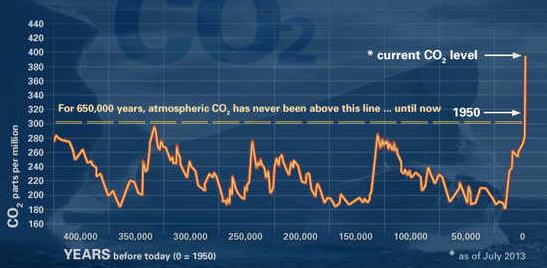
European Space Agency’s CryoSat-2 Satellite: Antarctica Shedding 160 Billion Tons of Ice A Year. Here’s a clip from Daily Kos that I wasn’t aware of: “…Antarctica is shedding 160 billion tonnes a year of ice into the ocean, twice the amount of a few years ago, according to new satellite observations. The ice loss is adding to the rising sea levels driven by climate change and even east Antarctica is now losing ice. The new revelations follows the announcement last week that the collapse of the western Antarctica ice sheet has already begun and is unstoppable, although it may take many centuries to complete...”

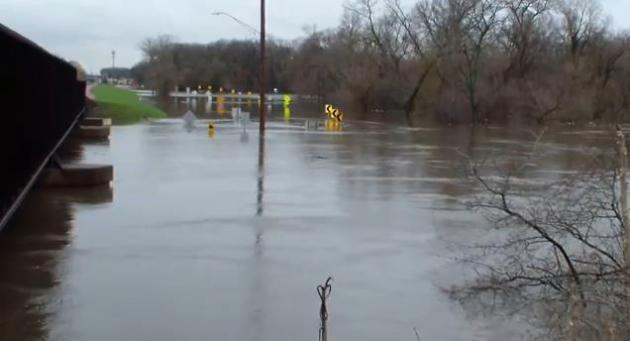
Climate Change: Get Ready or Get Sued. What are the liability implications of climate change, specifically the trend toward heavier summer downpours and more extreme flooding east of the Mississippi? The insurance industry and lawyers far and wide will be keeping a close eye on this case in Chicago’s suburbs. Here’s an excerpt of a story at The Washington Post: “…This is a new kind of storm associated with climate change,” Tom LaPorte, spokesman for the Chicago Department of Water Management, told Medill Reports on day two of the April flood. Extreme flooding is part of a pattern that has emerged in the last two decades, according to Illinois State climatologist Jim Angel. Now a major insurance company is suing Chicago-area municipal governments saying they knew of the risks posed by climate change and should have been better prepared. The class-action lawsuits raise the question of who is liable for the costs of global warming…”
YouTube video credit above: “Flooding of the Des Plaines River in Des Plaines , IL. the weather overcast and severe thunder storms. Over 5 inches of rain in less than 12 hours. Temps in the 60s.” Filmed by Ed Pilar for 8desplaines.com.
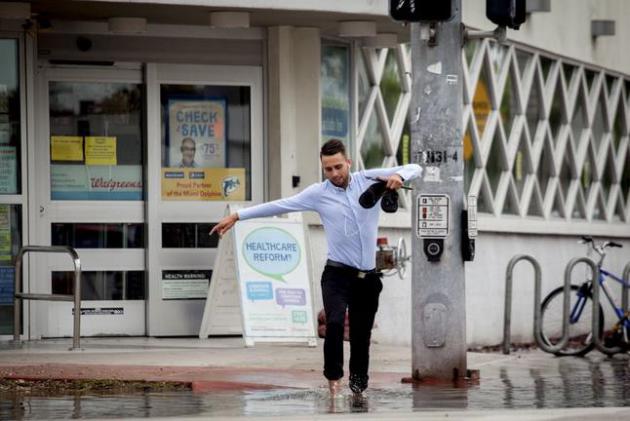
The People of Miami Know About Climate Change. We’re Living It. You no longer need a hurricane or even a coastal storm or thunderstorm downpours to get flooding in Miami. Now it often floods at high tide, a rising tide at that. Here’s an excerpt from a story at The Guardian: “…People in Miami Beach are living climate change,” said David Nolan, a meteorology and physical oceanography professor at the University of Miami. “They’re on the frontline.” The people of Miami Beach didn’t need the National Climate Assessment to tell them low-lying south Florida is “exceptionally vulnerable to sea level rise”. The city is already spending $206m to overhaul its drainage system. The day after the White House released its climate change report, Miami-Dade County’s commission passed a 6 May resolution that calls on planners to account for sea level rise. Local officials across the four counties of south Florida are making similar moves. Almost anyone who lives in south Florida has a nagging fear about climate change. It’s both abstract and, at times, very real…”
Photo credit above: “Bozon Jeremie, a tourist from France, crosses a flooded intersection during high tide in Miami Beach, Fla., Nov. 6, 2013. A new scientific report on global warming released in 2014 by the National Climate Assessment named Miami as one of the cities most vulnerable to severe damage as a result of rising sea levels.” (Angel Valentin/The New York Times).

Global Warming Responsible for Increased Wildfires in California? If this is, in fact, a “natural cycle” it’s one heck of a coincidence. Here’s an excerpt from a story at Headline & Global News: “…Global warming also contributes largely to mega-fires, which occur when multiple wildfires combine together to form a larger, deadlier blaze, and the size of these fires makes it difficult for containment. In the last decade, the occurrence of such fires has increased in frequency. According to Global Change, about 6.4 million acres have been burned per year on an average since 2010, amounting to a 3.5 million acres increase since the 1980s. Many studies have also highlighted that global warming also increases wildfires indirectly. This climate change leads to other factors that promote wildfires, such as drought and insect outbreaks…”
File Photo credit: “Smoke plumes rise behind the Marine Corps Camp Pendleton entrance Friday, May 16, 2014, in Oceanside, Calif. San Diego County officials said Friday five wildfires have been 100 percent contained. Still, crews were focusing efforts on two large fires — one in the city of San Marcos and two blazes at the Marine Corps’ Camp Pendleton.” (AP Photo/Gregory Bull).

